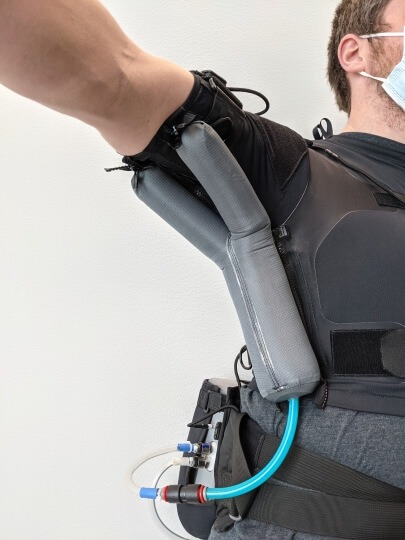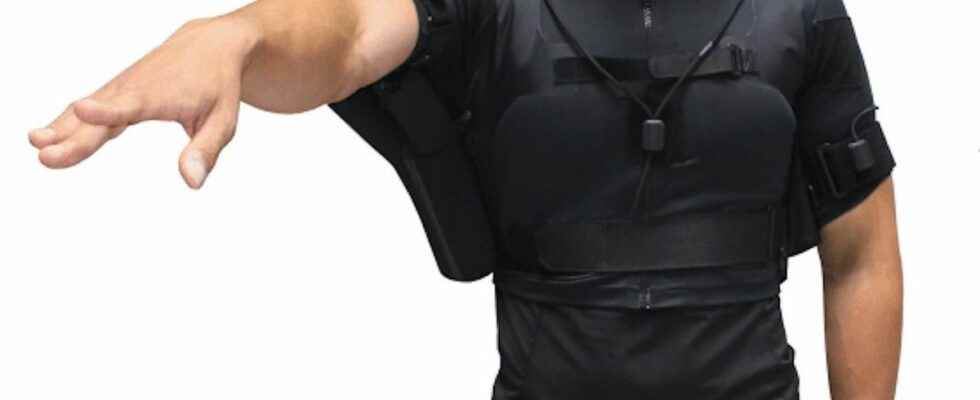Published on
Updated
Reading 3 mins.
Harvard researchers have developed a flexible, wearable robot prototype capable of providing significant upper arm and shoulder support and improving mobility in people with amyotrophic lateral sclerosis, better known as of Charcot’s disease. An invention that opens the way to many applications.
A rare but rapid neurodegenerative disease, amyotrophic lateral sclerosis (ALS) or Charcot’s disease, affects approximately 7,000 people in France. This serious neurodegenerative disease results in a progressive paralysis of the muscles involved in voluntary motricity, and muscle wasting (amyotrophy) affecting all movements. It is in this context that a team of researchers from the Harvard John A. Paulson School of Engineering and Applied Sciences (SEAS) and the Massachusetts General Hospital (MGH) has developed an astonishing device: a flexible robot to be carried like a bag backpack, capable of significantly assisting upper arm and shoulder movement in people with ALS.
A flexible prototype, made of balloons to assist movement
The technology, featured in Science Translational Medicine, on February 1, seems at first glance much simpler than one might imagine, far from the futuristic robot. The assistive prototype is flexible, fabric-based and wirelessly powered by a battery. The soft garment is light on the body, designed to be worn as a garment.
“It’s basically a shirt with inflatable balloon-like actuators under the armpit. The pressurized balloon helps the wearer fight against gravity to move their upper arm and shoulder.” details Tommaso Proietti, first author of the article.
To activate these balloons, the team developed a sensor system that detects residual arm movement and calibrates the appropriate pressurization to move the person’s arm smoothly and naturally.

Reduce muscle fatigue and improve amplitude
To improve their prototype, and assess how the device could extend their quality of life, the researchers recruited ten people living with ALS. After a 30-second calibration process to detect each wearer’s unique level of mobility and strength, the team found that their robit improved study participants’ range of motion, reduced muscle fatigue and increased performance of tasks such as holding or reaching for objects. It took participants less than 15 minutes to learn how to use the device. Promising results.

The flexible robot, a field that could improve life in several pathologies
At the moment, the prototype developed for ALS is only able to work on study participants who still had residual movement in the shoulder area. ALS, however, usually progresses rapidly over two to five years, rendering patients unable to move and eventually unable to speak or swallow. The team is then exploring potential versions of wearable assistive devices whose movements could be controlled by signals in the brain. Such a device, they hope, could one day facilitate movement in patients who no longer have residual muscle activity.
“This study gives us hope that soft robotic wearable technology could help us develop new devices that can restore limb function in people with ALS and other conditions that rob patients of mobility.” said Conor Wash, lead author, when presenting their study.
Although the researchers are still in the early stages of testing, the team does see possible rehabilitation applications for stroke patients as well as broader applications of the technology for people with spinal cord injuries. spinal or muscular dystrophy.
